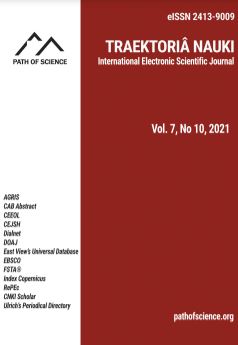Production of Bioethanol by Co-Culture of Aspergillus niger and Saccharomyces cerevisiae using Watermelon Peels as Substrate
Production of Bioethanol by Co-Culture of Aspergillus niger and Saccharomyces cerevisiae using Watermelon Peels as Substrate
Author(s): Bashir Ismail Olawale, Mahmud Yerima Iliyasu, Bishir Musa, Ahmad Abdulrahman, Ahmed Faruk UmarSubject(s): Agriculture, Energy and Environmental Studies, Sociobiology
Published by: Altezoro, s. r. o. & Dialog
Keywords: watermelon peels; lignocellulosic biomass; co-culture; Aspergillus niger; Saccharomyces cerevisiae; bioethanol;
Summary/Abstract: Bioethanol production from lignocellulosic biomass as an alternative fuel source has received considerable attention from researchers worldwide. Bioethanol was produced from watermelon peels by fermentation in the current work, using Aspergillus niger and Saccharomyces cerevisiae co-cultures isolated from soil and local beverage (kunun zaki), respectively. The isolates were characterised both macroscopically and microscopically. While starch hydrolysis test was carried out for the mould isolates, thermotolerance, glucose and ethanol tolerance tests were used to identify the yeast isolates. According to standard procedures described by the Association of Official Analytical Chemists (AOAC), Proximate analyses were carried out on the watermelon peels. The ethanol yield was determined using the specific gravity method. Isolate BGD of the moulds had the highest (40 mm) zone of clearance on starch agar. The identified yeasts showed the best growth at a maximum of 35 °C while tolerating up to 50% wt/v and 18% v/v of glucose and ethanol, respectively. The yeasts also fermented all the different sugars tested but lactose. The proximate composition of the substrate revealed low protein (3.5%) and ash contents (7.38%) but a remarkably high carbohydrate content of 79.22%. At optimal fermentation conditions (30 °C, pH 6.0, 4% g/L substrate, 200rpm and five (5) days fermentation period), the maximum ethanol yield produced by the co-culture of Aspergillus niger and Saccharomyces cerevisiae was 57 g/L. However, only 13.5 g/L and eight g/L were produced by individual cultures of A. niger and S. cerevisae, respectively. The bioethanol produced has a specific gravity of 0.994, miscible in water with a pleasant smell. This colourless liquid boils at a temperature of 78 °C with a pH of 3.02 and ignites at room temperature. It was concluded that watermelon peels are a suitable substrate for bioethanol production and was used successfully to produce an ethanol yield of 57 g/L by co-culture of A. niger and S. cerevisiae.
Journal: Traektoriâ Nauki
- Issue Year: 7/2021
- Issue No: 10
- Page Range: 6001-6011
- Page Count: 11
- Language: English

